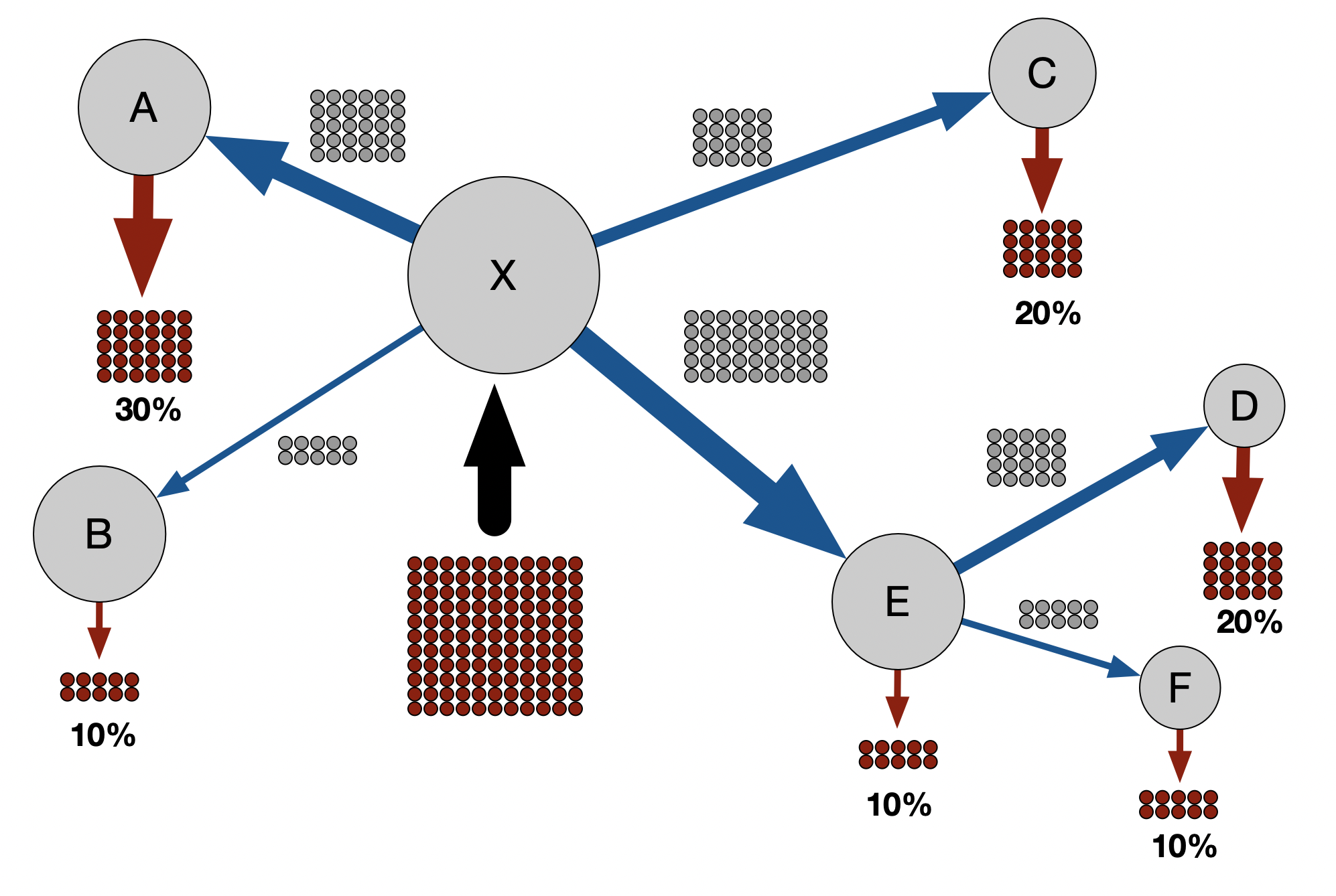Relative Import Risk Explained
In order to interpret the results presented on this site, it is important to understand the concept of relative import risk in the context of the COVID-19 outbreak and global air transportation.
If an infected individual boards a plane at airport A in an affected region, the relative import risk P(B|A) at airport B quantifies the probability that airport B is the final destination for that individual (irrespective of non-direct travel routes).
Say, 1000 infected individuals board planes at Hangzhou Airport. An import risk of 0.2% in Germany means that, of those 1000 individuals, only 2 are expected to have Germany as their final destination.

Say, 100 infected passengers board planes at airport X en route to destination airports elsewhere in the network, potentially going through transit airports in the process, e.g. passengers traveling to airports D and F in the figure above. The relative import risk at a given destination is simply the fraction of the 100 individuals that entered at airport X and exited at that destination airport. For example, the transit airport E has an import risk of 10% because, even though 40 of the 100 individuals that entered at X traveled to E, only 10 individuals had E as their final destination and exited the network here. The other 30 passengers traveled through E en route to a different destination airport. Transit passengers are depicted in grey.